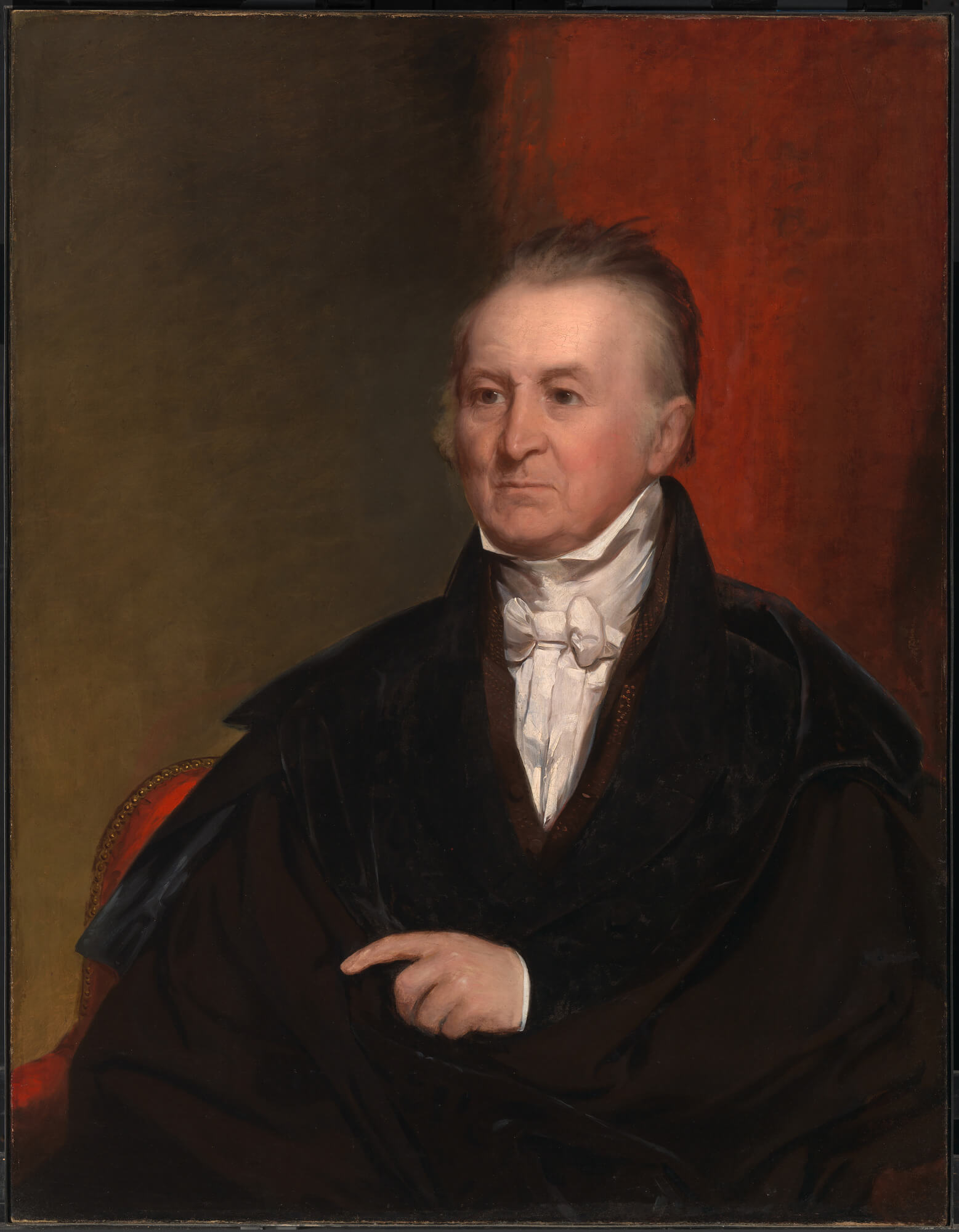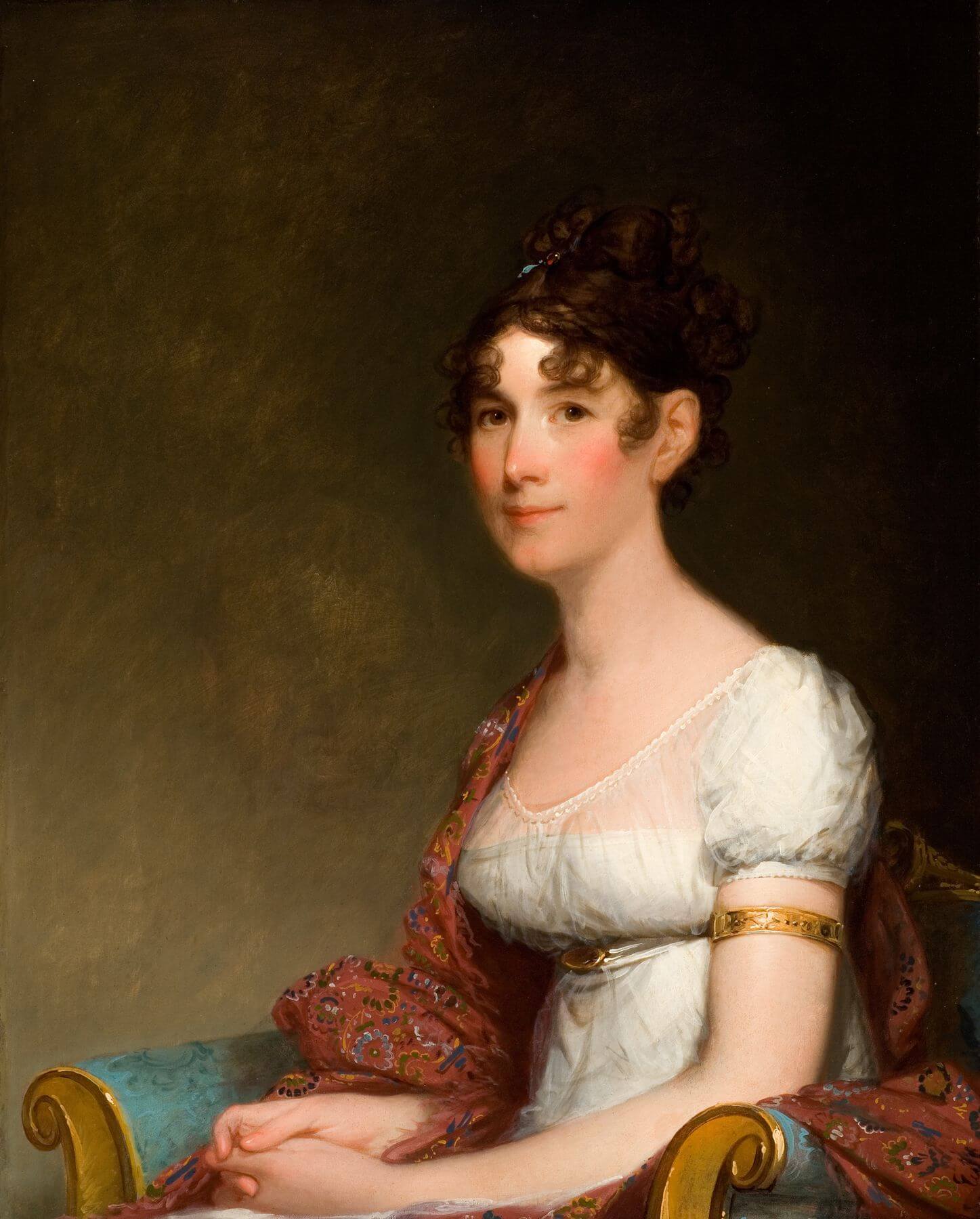Harrison & Sally Otis
Harrison Grey Otis was a major political and business figure in Boston during the Federalist Period. He is best known as a supporter of Charles Bulfinch, as Boston’s third mayor, and as a leader of the Hartford Convention. His wife, Sally, was a skilled socialite and hostess, who provided significant support for her husband’s political career.
Harrison Gray Otis (1765-1848), a wealthy lawyer who grew up during the American Revolution, is significant for his many building projects – including the the Otis House – and for serving many years in state and national government.
The Otis’ settled in Boston after the Revolutionary War. During the war, the yet unmarried couple had fled the besieged city, living in a family estate. For Harrison this was only an interlude, but it was traumatic for Sally. The Fosters, like the Otis’, were one of the oldest families in New England; however, unlike the vocally revolutionary Otis’, the Fosters were loyalists. When Boston was evacuated, Sally’s family left for England, and she would never see them again.
A decade after the war, the Otis’ moved to Bowdoin Square, a very respectable address in the Federalist Period. Surrounded by quiet hills and the Charles River, Bowdoin Square was a peaceful, almost rural alternative to busy downtown Boston, but commercial and residential development occurred quickly. Largely as a result of Otis’s extensive real-estate development projects, the New Fields area transformed into a new upper class neighborhood called West Boston.
The Bowdoin Square home – the First Harrison Gray Otis House – was built in 1796, but only four years later the family decided to move to Mount Vernon Street on Beacon Hill. Five years after that they moved again, this time to 45 Beacon Street, across from Boston Common.
Otis the Developer
Beacon Hill’s South Slope – where the second and third houses are located – was fast becoming a very elegant place to live, and Otis had a special interest in the new neighborhood. He was one of the “Mount Vernon Proprietors,” a group of real estate developers who owned the South Slope, where the Massachusetts State House was located. Otis, who was then in city government, used his early knowledge of the State House’s new location to select prime real-estate, and his company successfully transformed it from undeveloped pasture land into the grandest residential area in Boston.
Otis’ most significant projects were developed with the help of the architect Charles Bulfinch, who is famous for defining Boston’s architectural style, introducing brick to the city, and for numerous other projects. Otis and Bulfinch, along with other partners, organized the first major landfill projects in Boston. They tore down West Hill – or Mount Whoredom – a red light district, and used the soil to build out Charles Street. They then repeated this process for Beacon Hill, removing its peak and filling the Mill Pond to create the Bulfinch Triangle. The Mill Pond was owned by Bulfinch until he sold it to Otis due to financial troubles. While Bulfinch and Otis worked closely together throughout their careers, Otis usually managed to capture the vast majority of the financial benefits from their joint enterprises by means such as this.
Otis the Politian
A year after returning to Boston, Otis was elected to the United States House of Representatives as a member of the Federalist Party. He served from 1797 to 1801, when President John Adams appointed Otis as US District Attorney for Massachusetts. He held that position until 1802, when President Thomas Jefferson removed him from the post. Otis soon returned to politics, serving in the state senate and becoming a member of Harvard University’s Board of Overseers – a position of huge prestige.
In 1814-15 Otis served as leader of the Hartford Convention, a meeting of New England states to discuss their own defense during the War of 1812. Because the Federal Government had recruited a greater share of New England troops than from any other region of the country, but had failed to provide adequate defense, New Englanders refused to offer additional troops to the federal government. They demanded a series of amendments to the Constitution aimed at balancing the political power of North and South, and especially protecting trade and removing the Three-Fifths Rule that allowed Southern states to count 60% of their slave population for purposes of electoral college and congressional seats.
While Otis had managed to moderate the tone of the Hartford Convention, moving it away from serious threats of succession, by the war’s end the convention was associated with treasonous activity. It harmed the Federalist Party’s national reputation – and Otis’ – but because Massachusetts’ continued to be a Federalist stronghold Otis was elected as a United States Senator in 1817. In 1822 a young William Lloyd Garrison pushed for Otis to become Boston’s first mayor. Otis declined the nomination, but became the city’s third mayor, serving from 1829 to 1832.
Sally Otis
Sally Foster, later Sally Otis, was born to William Foster, a merchant in Boston, and Grace Spear. Sally and Harrison Gray Otis married in 1790 and had ten children, the last of which was born in 1810. Sally Otis was a popular hostess: she, like her husband, loved city life and enjoyed entertaining their many friends and political acquaintances. Sally was, in fact, one of Harrison’s great political assets. John Adams, in a letter to John Quincy Adams, remarked after visiting the Otis’ residence that “I never before knew Mrs. Otis. She has good Understanding. I have seldom if ever passed a more sociable day.” The artist Gilbert Stuart painted an oil-on-mahogany portrait of Sally Otis in 1809.
Harrison Gray Otis retired from public life after his service as mayor, and died in Boston on October 28, 1848. Sally died in 1836. Both were buried in Mount Auburn Cemetery in Cambridge, MA.
Article by Historic New England, edited by Sebastian Belfanti and Adam Tomasi
Source: Otis House Museum; Historic New England; Biographical Directory of the United States Congress; Encyclopedia Britannica 1911; Your Dictionary; Founder of the Day; Reynolda House Museum of American Art; Harrison Gray Otis, 1765-1848: The Urbane Federalist by Morison









